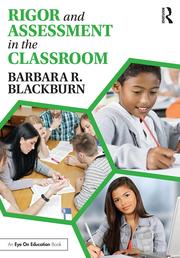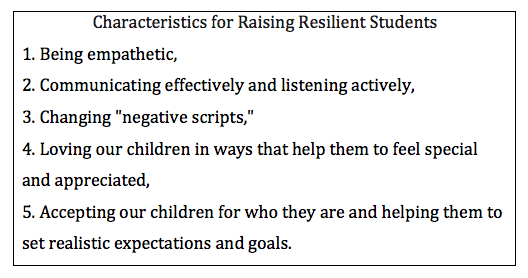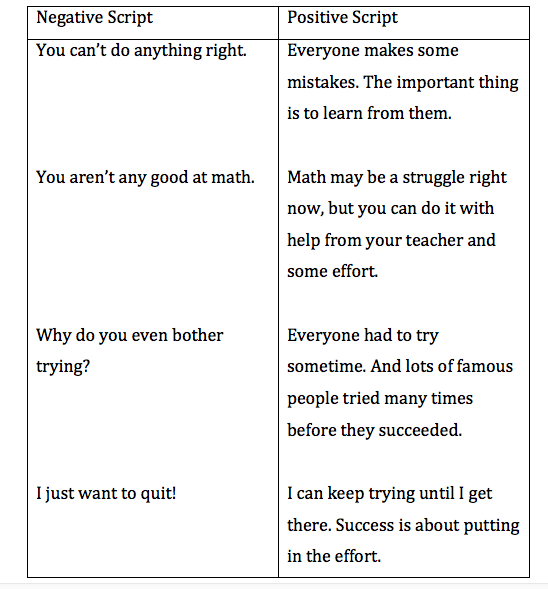5 Ways to Strengthen Student Resilience

The topic of resilience is quite popular in today’s educational circles. We know that helping students tap into or develop resilience is critical to students learning at high levels. In this article, we’ll look at five things teachers can do to encourage resilience.
You may end up asking yourself, “Aren’t these character traits? Do I really have any influence in these areas?” You absolutely can make a difference. These characteristics are learned – whether at students’ homes, from their friends, or at school. There are specific actions you can take to positively impact resilience in your struggling students.
You must start with your beliefs about resilience. You have a choice to believe you can make a difference or that you can’t. Resilience isn’t constant in our lives; you’ve probably had periods of time you were more or less resilient. The same is true of our students. Your beliefs may come out in surprising ways. Watch out for thoughts like “He’s just not good at that.” or “She’s at risk. That’s probably the best she can do.”
We also need to be sure that we view our struggling students as individuals who do have strengths and hopes, rather than as problems that must be solved. That perspective enables us to treat them as gifts to be nurtured and treasured rather than something to be bothered with.
Five Strategies for Raising Resilient Students
Robert Brooks and Sam Goldstein (2002) in Raising Resilient Children, provide guideposts for teachers (and parents) who foster resilience. Here are five characteristics; we’ll look at each in turn.
- Being Empathetic
It’s important that we care about our students. But we also need to move beyond the surface to truly understand who they are and how they feel.
I had a student who was a constant challenge, and I taught him for 2 ½ years! Todd came into my class with a reputation as an at-risk learner, and in seventh grade he lived up to it. By the eighth grade, he was trying to improve, but he struggled to move beyond his past patterns and others’ preconceived notions of him.
The turning point in our student-teacher relationship came when I discovered he had a talent for drawing, and I arranged for him to do some artwork for a special project. I was amazed at the turnaround from a completely negative attitude in my class the prior year to a positive attitude. He used his art to help him process learning. In fact, if other students were struggling, he would share his drawings with them to help them understand.
- Communicating Effectively and Listening Actively
One way we show empathy is by communicating effectively with our struggling learners, and that includes truly listening to them. A teacher in one of my workshops shared with me that she always tried to take time for her students, especially when there were breaks between classes or activities. As you might imagine, she also had other responsibilities, so she typically scanned the room while talking to students, just to make sure everything else was running smoothly.
One day, a student was asking her a question, and the student suddenly became quiet. When the teacher asked what was wrong, the student said, “You weren’t paying attention to me. You’re paying attention to everyone else.” The teacher immediately stopped, looked her in the eye, and said, “What do you want to say?” She began to listen actively as opposed to multitasking. That’s important to students.
We also need to make sure we are communicating clearly. There are four keys to effective communication:
- Fully answer the question being asked;
- Provide clear information;
- Be positive in your word use; and
- Finish with a question or a next step the person should take.
By following these principles, I found my students understood me better, and it improved our relationship.
- Changing “Negative Scripts”
Students who are not resilient typically have a negative script running in their heads at all times. In their minds, they hear comments like “You’re no good” or “You shouldn’t have tried.” It’s important for us, as teachers, to address this with our struggling students, and help them reframe the negatives as positives.
Be sure to actively model reframing negative scripts into positive ones and help your students do the same.
- Loving Our Children in Ways that Help Them to Feel Special and Appreciated
It’s important to consider the emphasis on “ways that help them to feel special and appreciated.” It’s not just what we think; it’s what makes them feel that way. Whether you are praising a student or encouraging him or her, think about what makes each one unique. Some want to be noticed for behavior, others for academics, still others for just being who they are. There are students who prefer to be noticed in public ways; others in a more private manner. Know them well enough to make them feel like the unique personalities they are.
- Accepting Our Children for Who They Are and Helping Them to Set Realistic Expectations and Goals
I want to point out that accepting students for who they are does not mean simply allowing them to stay where they are in the learning process. You can accept a student and still have high expectations for them to grow. The caution, however, is that we push them so hard we inadvertently send a message that they aren’t “good enough.”
There is a balance between helping them achieve more and accepting them. My niece, Asheland, is eight years old. Her mother and I both have dreams for her future. We imagine all sorts of wonderful opportunities for her, some of which she hasn’t even dreamed of herself. Does that mean we don’t love her now? No. We accept her with all her talents but encourage her to spread her wings. That’s what we want to do with all our struggling students.
Conclusion
Resilience is the ability to effectively handle pressure and to overcome failure. It is a characteristic that many of our struggling students do not have in the classroom, yet it is one that we can teach.

Learn more about her latest books here.





































